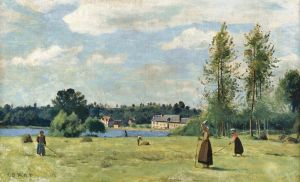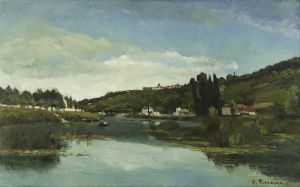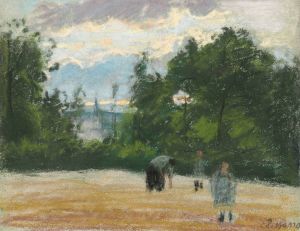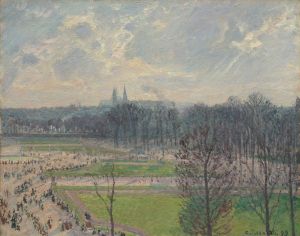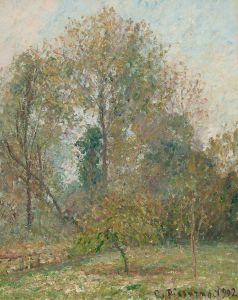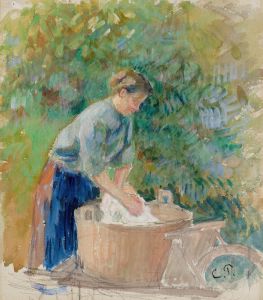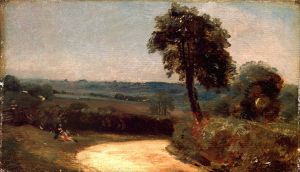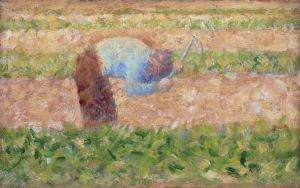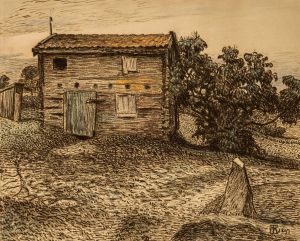
Water Mills in Meaux
A hand-painted replica of Camille Pissarro’s masterpiece Water Mills in Meaux, meticulously crafted by professional artists to capture the true essence of the original. Each piece is created with museum-quality canvas and rare mineral pigments, carefully painted by experienced artists with delicate brushstrokes and rich, layered colors to perfectly recreate the texture of the original artwork. Unlike machine-printed reproductions, this hand-painted version brings the painting to life, infused with the artist’s emotions and skill in every stroke. Whether for personal collection or home decoration, it instantly elevates the artistic atmosphere of any space.
"Water Mills in Meaux" is a painting by the renowned French artist Camille Pissarro, completed in 1890. Pissarro, a pivotal figure in the Impressionist movement, is celebrated for his depictions of rural and urban French life, capturing the essence of the landscape and the people within it. This particular work exemplifies his mature style, characterized by a harmonious blend of color, light, and texture.
The painting depicts the water mills located in the town of Meaux, a commune in the Seine-et-Marne department in the Île-de-France region, northeast of Paris. Meaux is known for its historical architecture and picturesque landscapes, which have inspired many artists over the years. Pissarro's choice of this setting reflects his interest in capturing the serene and industrious aspects of rural life, a theme prevalent in much of his work.
In "Water Mills in Meaux," Pissarro employs his signature technique of short, broken brushstrokes to convey the movement of water and the play of light on the mill structures and surrounding foliage. The composition is balanced, with the mills positioned centrally, drawing the viewer's eye to the interaction between the natural and man-made elements. The palette is composed of soft, muted tones, typical of Pissarro's work during this period, which evoke a sense of tranquility and timelessness.
Pissarro's approach to painting was deeply influenced by his commitment to plein air painting, a method that involves painting outdoors to capture the natural light and atmosphere of a scene. This technique is evident in "Water Mills in Meaux," where the natural lighting conditions are meticulously rendered, providing a vivid sense of the time of day and weather conditions.
The painting is also notable for its depiction of industrial elements within a natural setting, a subject that Pissarro explored with increasing interest during the latter part of his career. The water mills, symbols of human ingenuity and labor, are seamlessly integrated into the landscape, reflecting Pissarro's belief in the coexistence of humanity and nature.
Camille Pissarro was a key figure in the development of Impressionism, and his work laid the groundwork for subsequent movements in modern art. His influence extended to many other artists, including Paul Cézanne and Paul Gauguin, who regarded him as a mentor and a source of inspiration. Pissarro's dedication to capturing the essence of everyday life and his innovative use of color and technique have earned him a lasting legacy in the art world.
"Water Mills in Meaux" is housed in a private collection, and as such, it is not as widely accessible as some of Pissarro's other works. However, it remains an important example of his artistic vision and technical skill, offering insight into the themes and techniques that defined his oeuvre. Through this painting, viewers can appreciate Pissarro's ability to transform a simple rural scene into a profound exploration of light, color, and form.





